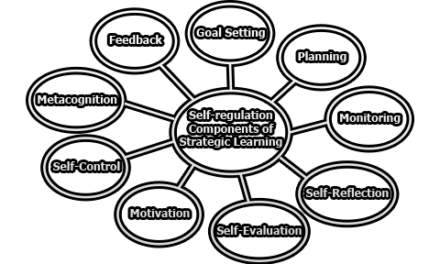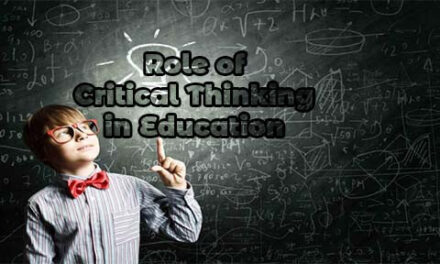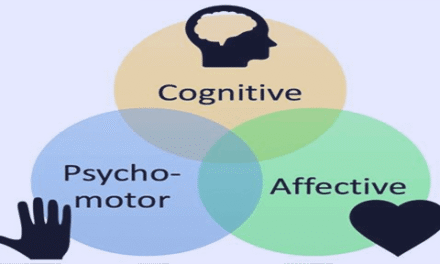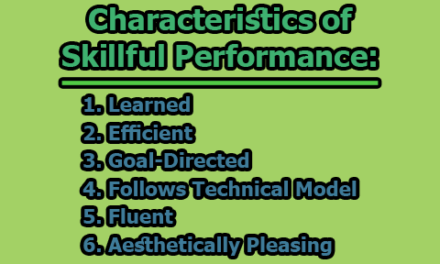Self-reflection and Self-evaluation Inquiry Process:
Self-reflection and self-evaluation are important processes for personal and professional growth. These processes allow individuals to examine their thoughts, actions, and behaviors to determine what is working well and what needs improvement. Self-reflection and self-evaluation require taking responsibility for one’s own learning and engaging in a structured process to develop an understanding of a specific topic. In this article, we are going to know about self-reflection and self-evaluation inquiry process.
Taking Responsibility for Learning:
The first step in the self-reflection and self-evaluation inquiry process is taking responsibility for learning. This involves acknowledging that personal growth and development are ongoing processes that require effort and commitment. It also requires individuals to be open to feedback and willing to make changes based on their own self-assessment. Taking responsibility for learning means recognizing that the individual is the primary agent of their own growth and development.
Engaging a Topic and Building Basic Knowledge:
The second step in the self-reflection and self-evaluation inquiry process is engaging a topic and building basic knowledge. This involves identifying a topic of interest and committing to learning more about it. This step requires individuals to approach the topic with curiosity and an open mind, without making assumptions or preconceived ideas. Building basic knowledge involves researching the topic, reading articles and books, watching videos, and engaging in conversations with others who have expertise in the field. It is important to have a solid understanding of the topic before developing a question.
Developing a Question:
The third step in the self-reflection and self-evaluation inquiry process is developing a question. A good question is one that is open-ended, clear, and focused. The question should be specific enough to provide direction but broad enough to allow for exploration. A well-formulated question will guide the individual’s inquiry and help them focus their efforts. It is important to take time to reflect on the question and refine it as needed.
Anticipating Possible Answers and Determining Relevant Information:
The fourth step in the self-reflection and self-evaluation inquiry process is anticipating possible answers and determining relevant information. This involves thinking about the question and anticipating the possible answers. It also requires individuals to identify the information needed to answer the question. Relevant information includes facts, data, research, and opinions from experts in the field. It is important to identify the most relevant information and discard any irrelevant or misleading information.
Identifying Resources and Gathering Information:
The fifth step in the self-reflection and self-evaluation inquiry process is identifying resources and gathering information. This involves identifying sources of information and collecting the relevant information needed to answer the question. Resources can include books, articles, websites, videos, and conversations with experts in the field. It is important to evaluate the credibility of sources and gather information from multiple sources to ensure a comprehensive understanding of the topic.
Assessing Information:
The sixth step in the self-reflection and self-evaluation inquiry process is assessing information. This involves critically analyzing the information gathered to determine its accuracy, reliability, and relevance to the question being explored. It is important to evaluate the strengths and weaknesses of the information and assess any biases or assumptions that may be present. This step requires individuals to be objective and impartial in their analysis.
Weighing Evidence and Synthesizing Understandings:
The seventh step in the self-reflection and self-evaluation inquiry process is weighing evidence and synthesizing understandings. This involves evaluating the information gathered and synthesizing it to develop an understanding of the topic. It is important to weigh the evidence objectively and consider multiple perspectives to develop a comprehensive understanding. This step also requires individuals to identify any gaps in their understanding and seek additional information as needed.
Communicating New Understandings:
The eighth step in the self-reflection and self-evaluation inquiry process is communicating new understandings. This involves sharing the results of the inquiry process with others. Communication can take many forms, such as writing a report, presenting to a group, or having a discussion with others. Effective communication requires clarity, organization, and a thorough understanding of the topic. This step provides an opportunity for individuals to share their knowledge and insights with others and receive feedback.
Evaluating Success:
The final step in the self-reflection and self-evaluation inquiry process is evaluating success. This involves reflecting on the inquiry process and determining its effectiveness. Individuals should assess whether they achieved their goals and objectives, whether they gained new insights and understanding, and whether they were able to communicate effectively. This step provides an opportunity for individuals to identify areas for improvement and make changes to their approach in the future.
At the end of the day, we can say that self-reflection and self-evaluation inquiry process is a powerful tool for personal and professional growth. By taking responsibility for learning, engaging a topic, developing a question, anticipating possible answers and determining relevant information, identifying resources and gathering information, assessing information, weighing evidence and synthesizing understandings, communicating new understandings, and evaluating success, individuals can gain new insights and understanding of a specific topic. The inquiry process requires individuals to be curious, objective, and open to new ideas. By following these steps, individuals can develop a deeper understanding of a topic and apply their new knowledge to their personal and professional lives.
References:
- Brookfield, S. D. (2017). Becoming a critically reflective teacher. John Wiley & Sons.
- Boud, D., Keogh, R., & Walker, D. (2013). Reflection: Turning experience into learning. Routledge.
- Kember, D., McKay, J., Sinclair, K., & Wong, F. K. Y. (2008). A four-category scheme for coding and assessing the level of reflection in written work. Assessment & Evaluation in Higher Education, 33(4), 369-379.
- Mezirow, J. (1991). Transformative dimensions of adult learning. Jossey-Bass.
- Moon, J. A. (2004). A handbook of reflective and experiential learning: Theory and practice. RoutledgeFalmer.
- Schön, D. A. (1983). The reflective practitioner: How professionals think in action. Basic Books.
- Stryker, S. (2020). Reflective practice in teacher education: Learning from case studies of preservice teachers. Journal of Teacher Education, 71(1), 71-83.
- Taylor, E. W. (2017). Transformative learning theory. In P. Jarvis, & J. Jackson (Eds.), Handbook of Adult and Continuing Education (pp. 57-68). Routledge.
- Thornton, K. M., & Jaeger, A. J. (2017). Reflections on reflective practice in library and information science education. Journal of Education for Library and Information Science, 58(1), 45-62.
- Yancey, K. B. (2016). Reflection in the writing classroom. Utah State University Press.

Library Lecturer at Nurul Amin Degree College










